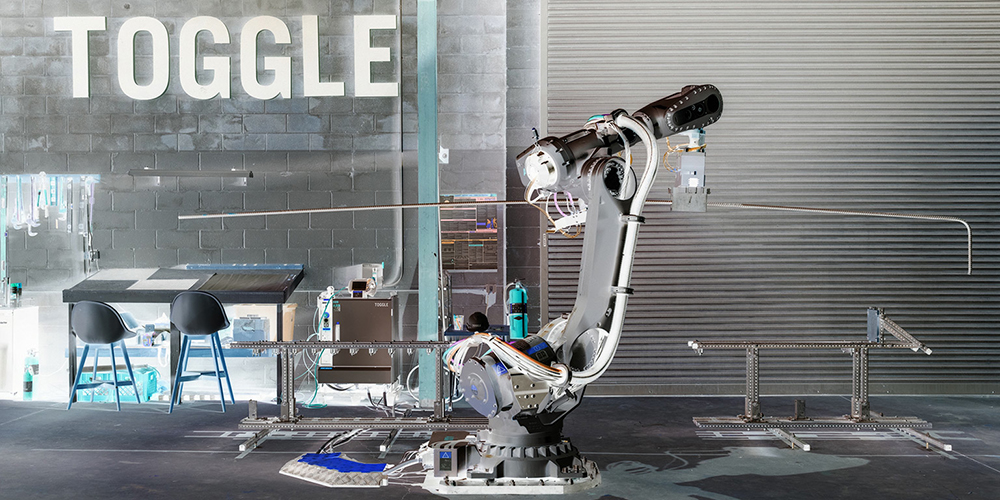Two Brooklyn-based construction entrepreneurs began their business with a simple observation: steel rebar, used in concrete construction throughout the world, isn’t always easy to work with. Ian Cohen and Daniel Blank noticed this when they were watching wind turbines being erected. “Watching the process of people manually moving these huge, heavy objects looked dangerous and difficult,” Cohen explained. Often made from scrap metal, rebar is a “really sharp, dirty material for humans to interact with.” They pivoted their URBAN-X accelerated startup, Toggle, which they founded two-and-a-half years ago with a focus on renewable energy, to the even more fundamental work of making the production of reinforced concrete faster and safer through automation.
Rebar steel is “traditionally manually picked up and erected into cages and shaped to hold reinforced concrete structures in place,” explained Cohen. These cages may be as long as 50 feet. That’s hard work for humans but is exactly the kind of job robots are suited for: taking very heavy things and moving them precisely. Using customized industrial robots, Toggle made modifications that allow the automated arms to “achieve bespoke movements.” The design-to-build process is also streamlined, with custom software that takes a design file, evaluates types of cages needed, then derives a build sequence, and goes straight into digital fabrication.

Currently, Toggle, which is in the early stages of its technology, is using a “cooperative process”—a human and robot working side by side. The robot does the dangerous work and heavy lifting, picking up and manipulating the bars, while the human does just the final wire tying. Toggle is in the process of automating this step as well, aiming to increase productivity over all-human rebar processing by as much as five times while halving the cost. The two also plan on adding a linear track that would allow the robot to produce larger meshes, though currently, they are operating at a fairly substantial maximum of 20 feet.
No mere experiment, the robot is currently being put to work, fabricating rebar for projects in New York City and the surrounding area. Part of the plan is to develop a system that works something like vertical farming, Cohen explained, where production happens close to where there is need, minimizing the logistical demands and long-distance transportation and “allowing civil infrastructure to be developed and constructed in the societies that need them most.” New York, of course, is a perfect testing ground with its constant construction.
Currently, global labor shortages, including in the U.S., make infrastructure construction expensive according to Cohen. Toggle’s goal is to “reduce cost and accelerate construction projects around the world, all while maximizing safety.” The intent, Cohen says, is not about getting rid of human labor but about “taking work away from humans that is not suited for them and putting them in jobs that are better for humans.”
For more on the latest in AEC technology and for information about the upcoming TECH+ conference, visit techplusexpo.com/nyc/.
